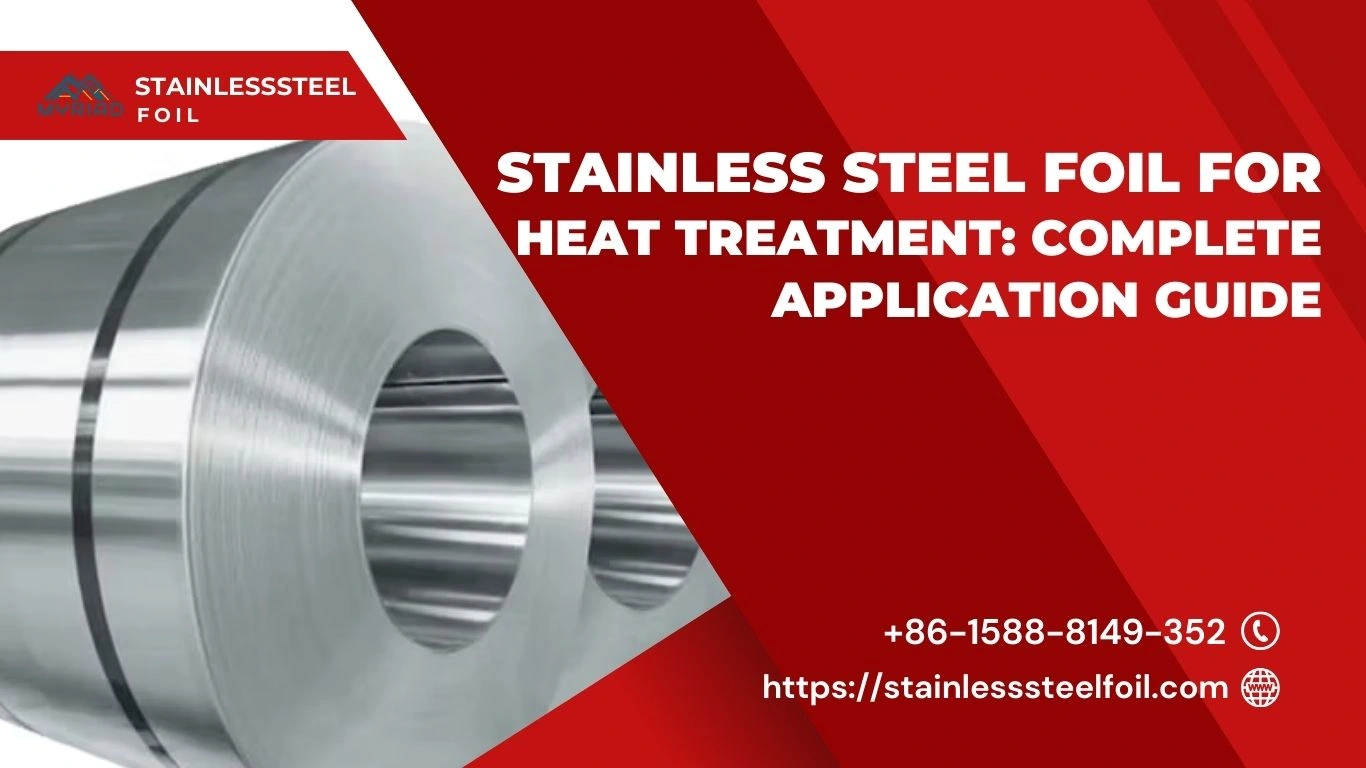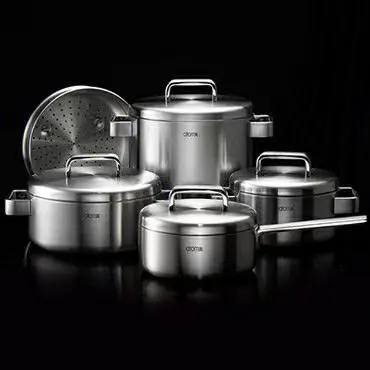
Stainless Steel Foil for Heat Treatment: Complete Application Guide
Heat treatment is a foundational process in modern metallurgy that determines the final strength and durability of metal components. When

Stainless steel, admired for its shine and durability, has become a popular choice in modern kitchens. But is it really the best option for cooking? Delving into the core issues of why stainless steel may not be the ideal choice, this article uncovers five significant perspectives ranging from uneven heat distribution to health concerns and high maintenance. Whether you’re a culinary expert or a cooking enthusiast, these insights will shed light on unexpected challenges and help you make an informed decision for your kitchen.
Read on: yaoyi stainless steel foil
Stainless steel, despite its sleek look and durability, struggles with heat distribution. It’s all about physics. Metals conduct heat at different rates. In cooking, we prize even heat. We want every inch of our pan to be the same temperature. Stainless steel, on its own, fails to deliver this consistency.
The outcome of this poor heat conductivity is a patchy sear on your steak, or worse, unevenly cooked food. One part of the dish may end up overcooked while another part remains undercooked. It’s frustrating for any cook, amateur or pro.
The cookware industry has responded to this issue by producing stainless steel pans with an aluminum or copper core. These metals are better heat conductors, thus resolving the uneven heat distribution to some extent.
But these combined material pans aren’t perfect. They’re often pricy. Plus, they can’t deliver the same level of heat conductivity that a pure aluminum or copper pan can. Their performance is an improvement, but still a compromise.
Another drawback to these pans? The cleaning process. While pure stainless steel pans are dishwasher-safe, pans with an aluminum or copper core often aren’t. This factor adds to the hassle and time cost of cooking with such pans.
Unlike non-stick pans, stainless steel lacks a coating that prevents food from sticking. This lack can turn a relaxing cooking session into a frustrating scrubbing ordeal.
When food sticks, you lose a portion of it to the pan. Not only is this a waste of food, but it makes cleaning up much harder. Anyone who’s had to scrub burnt food off a pan knows the struggle.
Some might suggest seasoning your stainless steel pans as a solution. Seasoning, the process of baking oil onto the pan, can create a semi-non-stick layer. But this method doesn’t work as well with stainless steel as it does with cast iron. It’s a Band-Aid, not a cure.
Given the sticking issue, one might wonder why anyone would choose stainless steel over non-stick pans. The answer lies in the durability and health concerns. Non-stick coatings can scratch and wear off over time, possibly leaching chemicals into food. Stainless steel, while sticky, doesn’t have these issues.
Interestingly, not all foods stick to stainless steel pans. Foods high in fat, like a well-marbled steak, can often cook without sticking. But leaner foods, and particularly delicate ones like fish, are more prone to sticking.
The pan you choose to cook can significantly impact the flavor of your food. Certain materials, like cast iron, can even impart a distinct taste to dishes. Stainless steel pans are generally neutral, neither adding nor detracting from food’s natural flavors.
Some cooks view this neutrality as a strength. It allows the natural flavors of the food to shine without interference from the cookware. But others see it as a missed opportunity.
In contrast, cast iron pans can enhance the flavors of food, especially when used to sear meat. The iron imparts a subtle but noticeable flavor. In comparison, stainless steel may seem lacking.
Stainless steel’s inability to maintain consistent high heat also impacts flavor. High heat allows for the creation of fond, those browned bits that stick to the bottom of the pan when searing meat. Fond is packed with flavor and forms the base of many sauces. With stainless steel, you may be missing out.
Lastly, due to the sticking issue, you often need to use more oil when cooking with stainless steel. This additional oil can alter the flavor and nutritional profile of your dish.
One health concern related to stainless steel cookware involves the potential for metal leaching. This happens when the cooking process causes tiny amounts of the metal to enter the food. Nickel, a component of stainless steel, can cause allergic reactions in some people.
While there is some concern, it’s important to note that research on this topic is limited. Most studies suggest that the amount of metal leached is minimal and unlikely to cause health issues.
Compared to other types of cookware, stainless steel may even be a healthier choice. Non-stick pans, for example, have been linked to health concerns due to their coatings.
The cooking methods used can also impact the level of metal leaching. Acidic foods, like tomatoes, and high-heat cooking methods, like frying, can cause more leaching.
Some stainless steel pans are marketed as being safer, with less potential for metal leaching. Look for high-quality, heavy-duty stainless steel cookware if this is a concern.
Stainless steel can lose its luster over time. Regular polishing is necessary to maintain its shiny appearance. This chore adds to the overall maintenance required for these pans.
Despite the name, stainless steel can indeed stain. High heat can cause discoloration, and certain foods can leave marks. These stains can be stubborn and require specific cleaning methods to remove.
Not all cleaning tools are suitable for stainless steel. Abrasive cleaners and rough sponges can scratch the surface. Using the wrong tools can damage your pans and shorten their lifespan.
Stainless steel pans are known for their durability and longevity. But this longevity comes with the cost of high maintenance. For those who value ease and convenience, this could be a significant drawback.
Lastly, stainless steel pans can warp over time, especially when subjected to high heat. Warping affects the pan’s stability on the stove and its heat distribution, further complicating the cooking process.
Read more: A Complete Guide To AISI 430 Stainless Steel
Get more: A Complete Guide To AISI 4140 Low Alloy Steel
Read on: A Complete Guide To Stainless Steel AISI 420
Keep Reading: A Complete Guide To Stainless Steel Banding
Learn more about the:The stainless Steel Foil Provided With High Quality and Best Price
Read more: How to Find the Best Deals on 316 Stainless Steel Foil Price
Get more: How to Choose the Right Thickness of 304 Stainless Steel Foil for Your Application

Heat treatment is a foundational process in modern metallurgy that determines the final strength and durability of metal components. When

Stainless steel coils serve as the backbone for countless consumer products we use daily. These versatile metal sheets combine exceptional